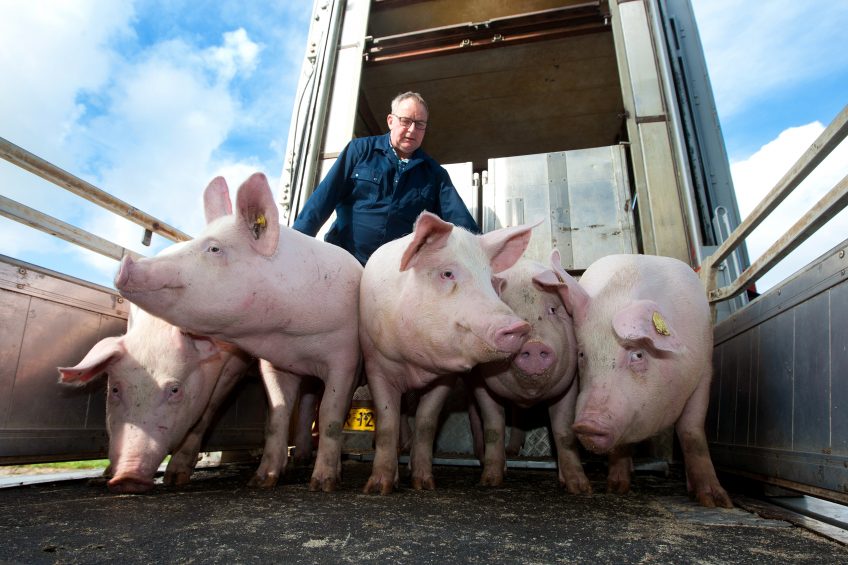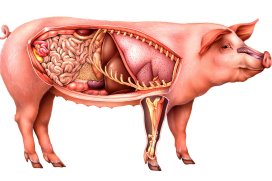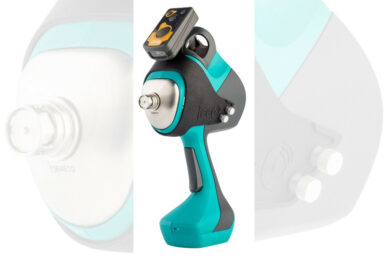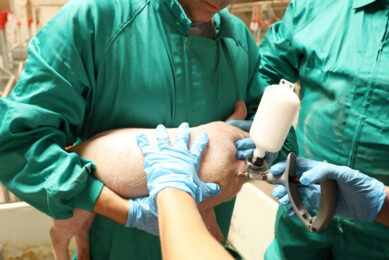Never forget M. hyo when introducing gilts

For about 20 years, it has been known that M. hyo can stay around in a pig farm through the introduction of new breeding animals. A well-operated method to acclimatise gilts is therefore essential to maintain high health levels on a farm.
A global picture is emerging that the ability of many pig herds to control the respiratory infection Mycoplasma hyopneumoniae (M. hyo) is at risk from the lack of a proper focus on the introduction of replacement gilts. Evidence comes from a series of surveys conducted internationally, which have shown often questionable approaches to the acclimatisation of new gilts before these enter the breeding herd. Also there is insufficient monitoring of the protocols to measure if they are working as intended.
Veterinarians believe inadequate preparation for gilt replacements may help to explain the persistence of unsolved M. hyo problems in some herds. The suspicion has been backed by recent research supporting the need for a strategic and accurate gilt acclimatisation protocol to maximise the effect of M. hyo vaccination in piglets.
Economic significance of enzootic pneumonia
It remains clear that enzootic pneumonia continues to be economically significant worldwide and needs to be controlled at farm level. M. hyo is one of the primary pathogens involved in Porcine Respiratory Disease Complex (PRDC). Investigators confirmed almost 20 years ago how breeding sows were responsible for maintaining M. hyo infections within the herd.
The sows begin a chain of infection at farrowing by passing the pathogen to their piglets, which can then spread to pen mates during the rearing/growing/finishing phases. Sow-to-piglet transmission, described within the past 10 years, is more likely to occur with the first and second parity sows than with older sows.
Acclimatising gilts must be part of M. hyo control programme
No control programme to beat M. hyo can succeed unless it includes a correctly devised and well-operated method for acclimatising gilts. The fundamental principle of M. hyo acclimatisation is to make sure every gilt has gone through infection early enough in her development to avoid shedding M. hyo when farrowing her first litter. The highest risk of shedding at farrowing occurs where gilts become infected less than 200 days before giving birth. Therefore, an acclimatisation period is necessary and it should begin as early as possible.
To develop a better understanding of how replacement breeding gilts are being acclimatised in practice, Boehringer Ingelheim specialists devised a survey format directing key questions to individuals responsible for herd health management. This questionnaire has since become the basis of surveys in several countries about practices at sow farms positive for M. hyo.
Know the incoming gilt status
An early example from Mexico incorporated the responses from producers and veterinarians representing 397,553 sows in 7 Mexican states. From their responses, the M. hyo status of herd replacements was known in most cases and around 90% of replacement gilts were considered positive. In Mexico, around 47% of producers reported introducing replacements into the acclimatisation process when the animals were between 16 and 20 weeks old, implying that the introduction began too late.
The main factors risking herd stability when bringing new gilts into a M. hyo positive sow population were highlighted by a comprehensive survey in the US swine industry, representing 963,750 sows. Some 55% of respondents said they received M. hyo naive gilts into a positive herd – generally regarded as the situation in which acclimatisation is most critical. Replies also showed that 41% of instances involved herds where the sow replacement rate was over 50% per year, again a major indicator of risk.
Other risk factors included that the process of acclimatising began too late in 53% of cases. As for acclimatisation procedures applied, the US survey largely echoed the one in Mexico with continuous flow operation and vaccination in gilt flows coming top of the list.
How are gilts acclimatised?
Answers to these surveys described a variety of methods being used for acclimatising gilts to M. hyo, as Table 1 summarises. About two-thirds of respondents reported that they vaccinated their replacement breeding animals. Three-quarters of the acclimatisation sites covered by the survey were described as ‘continuous flow’ and 56% of the respondents said they thought that this improved the acclimatising process.
Although 96% of all respondents considered an adequate acclimatisation to be important for the control of M. hyo, only 14 % of them verified the process by using serology. For 71% of the Mexican farms, the assessment of the stability of M. hyo in the reproductive herd was based solely on clinical signs.
A 2017 pan-European survey had near-identical findings. It showed that whereas three-quarters of the farms used M. hyo acclimatisation strategies for gilts, just one fifth of them took steps to verify the effect of the process. The questionnaire was completed by 108 vets in 18 countries in Europe including Russia, giving a view of 321 farms.
Where 75% of Mexican farms and 72% of those in the US survey had used continuous flow to acclimatise gilts, the proportion in Europe was just 29.5%. Within Europe, the most frequent situation (80.9% of farms) was that the farm had its own all-in/all-out isolation facilities to accommodate gilts while they were acclimatised. This is probably a reflection of the different production systems used in these locations, according to the report.

Find out all there is to know about pig health using Pig Progress’ unique Pig Health Tool
Vaccination as most widely adopted
As reported in Mexico and the US, vaccination was the most widely adopted option everywhere. A separate survey on M. hyo positive sow farms in different regions in Spain was conducted among 45 veterinarians and producers representing 44,362 sows. This report shows that continuous flow was more of an acclimatisation feature than in the European survey and vaccination was again the action of choice for the majority.
Remarkably, 37% of producers surveyed in Spain say they did not think it was necessary to acclimatise sows for M. hyo. Among those actually applying acclimatisation, 38% started the process late by introducing the replacements after 20 weeks old. Less than 7.5% performed diagnostics to verify results, yet half of the people thought their existing acclimatising procedure was less than ideal.
Considering the long persistence of M. hyo along with its low transmission rate, the ideal acclimatisation scenario receives gilts before 50 days of age in order to allow enough time for them to be exposed, become infected and are no longer shedding the bacteria by their first farrowing at about 350 days old. It therefore requires careful management alongside strategic vaccination to make sure that incoming gilts do not trigger a chain of M. hyo infection in the breeding and finishing herd.
References available on request.











